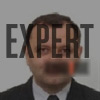Expert Details
Remote Sensing, Radiative Transfer, Light Scattering, Optical Particle Sizing, Spectroscopy, Optics

ID: 730507
Germany
ocean, tissues, fabrics, paper, foam, paint, snow, aerosols and clouds. My education in theoretical physics is
essential to the solution of corresponding scientific and applied problems.
Expert has applied his optical engineering background to pollution monitoring in cities from a satellite. He has used satellite top-of-atmosphere spectral reflectance measurements to determine the concentration of trace gases and particulate matter over several megacities. Correspondent measurements by ground stations are expensive and exist only in several locations. The solution of the inverse problem was performed in the framework of the radiative transfer theory. Also he is the author of several books on related topics published recently (2003-2008).
Expert has worked in the area of atmospheric optics for last 25 years (from 1983). He has developed a number of approaches for the simulation of the performance of the vision systems in atmosphere. The concept of the atmospheric optical transfer function (OTF) was used. OTF was calculated in the framework of the image transfer theory and concepts of Fourier optics with account for multiple light scattering. He has derived a number of approximate equations, which have been applied successfully to the interpretation of measurements and the solution of the broad range of atmospheric optics problems including the determination of microphysical characteristics of aerosols and clouds using reflectance and transmittance measurements.
He graduated in the area of theoretical physics. The solid knowledge of advanced theoretical concepts helped to solve great number problems in the area of optical physics. The major advances were achieved in the following branches of optics:
-light scattering in turbid media (ocean, atmosphere, textiles, and paper);
-circular dichroism studies for multiply scattering inhomogeneous media;
-radiative transfer in clouds and aerosols;
-satellite remote sensing using the visible and near-infrared spectral ranges.
Expert has used the concepts of spectroscopy to determine the concentration of trace gases and also sizes of small particles from spectral reflectance measurements. The concentrations have been determined from the comprehensive analysis of the absorption bands in the solar backscattered light. Some of results are described in the books "Light Scattering Media Optics" (Springer-Praxis, 2004), "Cloud Optics" (Springer, 2007), and "Aerosol Optics" (Springer-Praxis, 2008).
He also applied his knowledge in the field of optical engineering and spectroscopy for studies of textile dyeing and in particular he has developed a technique to calculate the spectral reflectance of textiles with account for fluorescent agents (not published work). The derived analytical equations are based on the solution of radiative transfer equation for the case of a multiply light scattering medium.
Education
| Year | Degree | Subject | Institution |
|---|---|---|---|
| Year: 1991 | Degree: PhD | Subject: Optics | Institution: Institute of Physics, Minsk |
Work History
| Years | Employer | Title | Department |
|---|---|---|---|
| Years: 2001 to 2012 | Employer: University of Bremen | Title: Senior Reseacher | Department: |
Responsibilities:He is responsible for the development of satellite remote sensing software. |
|||
Language Skills
| Language | Proficiency |
|---|---|
| Russian | |
| German | |
| Polish |
Fields of Expertise
absorption spectroscopy, aerosol instrumentation, aerosol measurement, aerosol physics, air pollutant measurement, atmosphere, atmospheric absorption, atmospheric optics, atmospheric precipitation, atmospheric science, blue ice, ceramic powder characterization technology, circular dichroism, climate, cloud physics, coating powder characterization, coating technology, color, color matching, color measurement, color technology, coloring process, combustion measurement, cotton fabric, crystal size distribution, diffuse reflectance spectroscopy, dye, dynamic light scattering spectroscopy, Earth sensor, electromagnetic radiation, fiberglass sizing, fluorescence spectroscopy, high visibility color, ice, Landsat, laser light scattering, lidar, light scattering spectroscopy, low earth orbit satellite, luminescence, Mie scattering, oil exploration, optical sensing, optical sensor, optical spectroscopy, optical technology, optics, paint technology, paper, paper property, particle, particle characterization, particle classification, particle combustion, particle surface area determination, particle suspension (mixture), particle-size analysis, particle-size control, particle-size distribution determination, particle-size measurement, particulate matter, pigment technology, polarized light spectroscopy, pollution measurement, polymer material analysis, powder technology, pulp-and-paper technology, remote sensing, Russian-English translation, satellite, satellite image interpretation, satellite imaging, sea ice, sizing, snow, soot particle size measurement, SPOT satellite, textile dyeing
